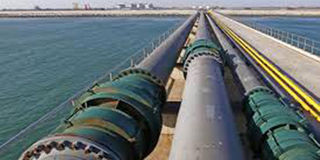The Uganda refinery: Satisfying region’s demand for petroleum

The high cost of importing petroleum products into Uganda and the high cost of exporting surplus products out of Uganda to international markets means that there is a strong incentive to have a refinery that matches regional demand.
What you need to know:
- Refinery target. The high cost of importing petroleum products into Uganda and the high cost of exporting surplus products out of Uganda to international markets means that there is a strong incentive to have a refinery that matches regional demand.
- This demand is set by the area over which the refinery can achieve a supply cost advantage. The refinery is targeting Uganda, South Sudan, eastern DRC, Rwanda, Burundi, northern Tanzania and western Kenya.
Petroleum refining is the separation of crude oil into various useful fractions by the means of physical, thermal and chemical processes. These fractions, some of which are further processed through separation and conversion into finished petroleum products, can then be sold on the local and international markets.
In 2006 when commercial oil reserves were discovered in Uganda, the entire East African region had only one operational refinery located in Mombasa, Kenya, with a capacity of 70,000 bbl/day. However, the refinery was operating at half-capacity and was experiencing operational challenges. This posed reduced security of supply and high importation costs to the region, specifically to Uganda.
In 2008 an extraordinary heads of state meeting was held wherein it was agreed that the EAC strategy for development of regional refineries be adopted by partner states. It was, therefore, against this back drop that it was recommended that a refinery be developed in Uganda.
The Government of Uganda contracted a consultant in 2010 (Foster Wheeler Energy Ltd.) to carry out a feasibility study for the development of a refinery in Uganda. The feasibility study confirmed that the refinery was a profitable venture in Uganda.
The study further recommended a refinery size of 60,000 bpd, with possible expansion to 120,000 then to 180,000 bopd, upon expansion of the market and future discovery of more oil reserves.
With the confirmation of the profitability of the project, the Government of Uganda embarked on a tendering process, aimed at identifying an investor, who would partner with the government to develop, finance, build and operate the refinery.
More than 40 firms participated in the bidding process and a consortium called Albertine Graben Refinery Consortium, comprising of Yaatra Ventures LLC, General Electric, Saipem SpA and Lionworks Ltd emerged the best evaluated bidder. In April 2018, the government entered into a Project Framework Agreement (PFA) to enable commencement of FEED.
Based on URA transit figures, Uganda’s demand for petroleum products between 2012 and 2017 grew at nearly 9 per cent per annum. This percentage means that by the time the refinery is commissioned, Uganda’s demand for petroleum products is expected to lie between 58,000 and 65,000 bopd assuming annual growth rates in the range of 7 and 9 per cent respectively.
In 2030, domestic demand is expected to lie between 87,000 and 111,000 bopd, while in 2045, the domestic demand is projected to lie between 240,000 and 400,000 bopd; assuming no interruptions in demand growth.
The high cost of importing petroleum products into Uganda and the high cost of exporting surplus products out of Uganda to international markets means that there is a strong incentive to have a refinery that matches regional demand.
This demand is set by the area over which the refinery can achieve a supply cost advantage. The refinery is targeting Uganda, South Sudan, eastern DRC, Rwanda, Burundi, northern Tanzania and potentially western Kenya as a possible markets. Further market analysis will, however, be done to define the market better.
By the time the refinery is commissioned, accessible regional markets in South Sudan, eastern DRC, western Kenya, northern Tanzania, Rwanda and Burundi will have demand for petroleum products of between 40,000 and 62,000 bopd assuming annual growth rates in the range of 7 and 9 per cent respectively.
In 2030, accessible regional demand is expected to lie between 56,000 and 87,000 bopd, while in 2045 the domestic demand is projected to lie between 170,000 and 259,000 bopd.
Capacity increases in the refinery could, therefore, address Uganda and regional market demands for refined petroleum products if the capacity of the refinery is 60,000 bpd at start up increasing to 120,000 bpd capacity and finally stepping up to 180,000 bpd.
Mr Pickens is an oil businessman.




